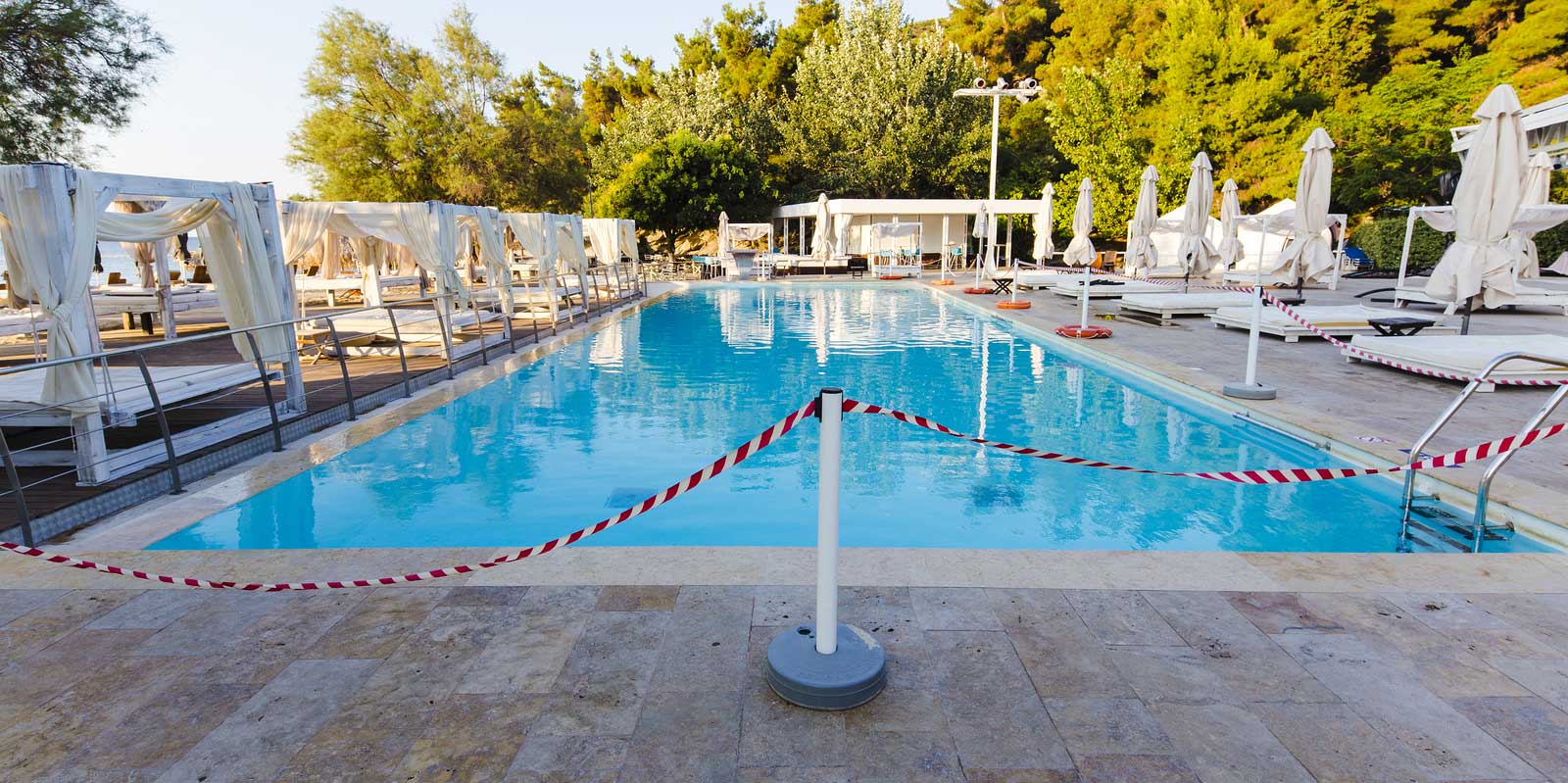- BY patric
- POSTED IN Tips and Tricks
- WITH 0 COMMENTS
- PERMALINK
- STANDARD POST TYPE

We understand you love your pool and can’t imagine living without it, but sometime you need to close it down temporarily. The reason can be anything from weather to going on an extended vacation. Whenever there is a stretch of time where you won’t be using your pool or will not be arounded to clean and maintain it, it’s a good idea to close it down.
Closing your pool, even for a short while, can be a daunting process. We recommend asking a professional technician. However, here are some general guidelines that you should consider following. The last thing you want is to come back to a damaged pool.
Use Safety Gear
if you’re going to be working with strong pool chemicals, it’s better to be safe than sorry. Goggles and gloves should be used to avoid exposure and wear a face mask so you don’t breathe in toxic fumes.
Adjust the Chemical Levels
To avoid corrosion and scale buildup, you’ll want to use a kit to check the pH, calcium hardness, and alkalinity. Your pH level should be between 7.2 and 7.6, alkalinity needs to stay between 80 and 120 ppm, and calcium hardness must be between 180 and 220. Adjust your chemicals to meet these goals and you’ll be set.
Shock the Water
shocking your pool water is a common technique that you should do periodically to give a boost of bacteria killing. Some chlorine shock kits say you can swim almost immediately after. This is not the kit for you. When you’re looking at letting your pool sit for a while, you want a very strong chlorine kit to effectively shock the water.
Remove All Objects From the Water
for extra precuation, take out all pool tools, ladders, hoses, filters, or even decorative fittings. Also, skim the pool to collect any leaves, bugs, or other debris to keep them from clogging the system.
Clean the Pool
if you have a pool vacuum or brush, it’s time to put them to use. Scrub and vacuum the bottom and all sides of the pool. Also, take out any filters and spray them down thoroughly. This will keep you one step ahead of buildup or grime, giving your pool a better chance of reopening clean and tidy.
Lower the Water Level
use the main drain or a pump to lower your pool’s water level below the skimmer. The type of pool cover you’re planning on using can affect how low you should lower it, so check the guide!
Cover Up Your Pool
the pool cover helps keep debris out of your pool, keeping it clean and ready to go. If you don’t have children or pets in the house, a floating tarp may be enough to meet your needs. However, it won’t assist if a child or pet falls into the pool. For that, you’ll be an anchored, enforced, mesh cover that is fitted tightly to the pool. Think about what is safest for your home as you choose a tarp.
No matter your reason for temporarily closing down your pool, it’s important not to rush. Take every precaution and care to save you time, money, and hassle when you’re ready to jump back in. When in doubt, ask a professional for their opinion or to do the task themselves. It’s worth the extra investment.
If you found this article helpful, share it with your fellow pool owners on Facebook, Twitter, or wherever you socialize online. And if you have any other tips for how to properly close a pool, comment below and let us know!

